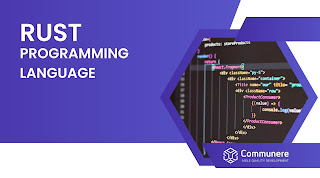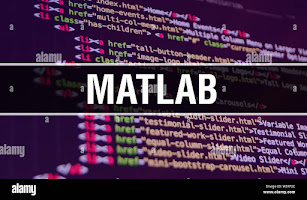2024's Best Programming Languages to Boost Your Coding Skills
In the ever-evolving world of technology, keeping your coding skills up-to-date is essential for staying relevant and competitive. Whether you're a seasoned developer or just starting, learning the best programming languages in 2024 can open doors to new opportunities and enhance your career prospects. This comprehensive guide covers the top programming languages to learn in 2024, highlighting their uses, benefits, and why they are essential for your coding toolkit.
1. Python
Overview
Python continues to be a top choice for developers due to its simplicity, versatility, and wide range of applications. It's an interpreted, high-level programming language known for its readability and straightforward syntax.
Uses
Web Development: Frameworks like Django and Flask make Python a popular choice for web development.
Data Science and Machine Learning: Libraries such as Pandas, NumPy, and TensorFlow facilitate data analysis and machine learning.
Automation: Python is widely used for scripting and automating repetitive tasks.
Game Development: Libraries like Pygame allow for simple game development.
Benefits
Easy to Learn: Ideal for beginners due to its simple syntax and readability.
Community Support: A large community and extensive documentation.
Versatility: Suitable for a wide range of applications, from web development to data science.
2. JavaScript
Overview
JavaScript remains one of the most important languages for web development. It enables interactive web pages and is an essential skill for front-end developers.
Uses
Web Development: Core technology alongside HTML and CSS.
Mobile App Development: Frameworks like React Native allow for building mobile apps.
Server-Side Development: Node.js enables JavaScript to be used on the server-side.
Benefits
Widely Used: Essential for web development.
Rich Ecosystem: A plethora of libraries and frameworks.
Versatile: Can be used for both client-side and server-side development.
3. Java
Overview
Java has been a staple in the programming world for decades. Known for its portability across platforms, it's widely used in enterprise environments.
Uses
Web Development: Java EE for enterprise-level web applications.
Android App Development: The primary language for Android apps.
Big Data: Frameworks like Apache Hadoop use Java.
Enterprise Solutions: Robust and secure applications for large organizations.
Benefits
Platform Independence: Write once, run anywhere.
Robustness: Strong memory management and security features.
Scalability: Suitable for large-scale applications.
4. C
Overview
C# (C-Sharp) is a language developed by Microsoft, widely used for developing Windows applications and games.
Uses
Game Development: Primary language for Unity game engine.
Web Development: ASP.NET framework for web applications.
Desktop Applications: Windows Forms and WPF for desktop applications.
Enterprise Applications: Common in business environments using Microsoft technologies.
Benefits
Integration with Microsoft Products: Seamless integration with .NET framework.
Rich Libraries: Extensive libraries and frameworks.
Performance: Good performance for a wide range of applications.
5. C++
Overview
C++ is a powerful, high-performance language used in systems programming, game development, and real-time simulations.
Uses
Game Development: Used in high-performance game engines.
System Programming: Operating systems, device drivers, and embedded systems.
Finance: High-frequency trading algorithms.
Real-Time Systems: Robotics and real-time simulations.
Benefits
Performance: High performance and efficiency.
Control: Offers fine-grained control over system resources.
Versatility: Can be used for a wide range of applications.
6. Go (Golang)
Overview
Go, developed by Google, is known for its simplicity and performance. It’s becoming increasingly popular for backend development and cloud services.
Uses
Web Servers: Efficient web server development.
Distributed Systems: Suitable for cloud services and microservices.
Command-Line Tools: Often used for creating CLI tools.
Concurrent Applications: Built-in support for concurrency.
Benefits
Performance: Compiled language with high performance.
Simplicity: Clean and simple syntax.
Concurrency: Excellent support for concurrent programming.
7. Swift
Overview
Swift is Apple’s programming language for developing iOS and macOS applications. It's known for its performance and safety features.
Uses
iOS Development: Primary language for iPhone and iPad apps.
macOS Development: Used for desktop applications on macOS.
WatchOS and tvOS: Development for Apple Watch and Apple TV.
Benefits
Performance: Compiles to native code for high performance.
Safety: Strong typing and error-handling features.
Modern Syntax: Clean and expressive syntax.
8. Kotlin
Overview
Kotlin, endorsed by Google, is the preferred language for Android app development. It’s fully interoperable with Java.
Uses
Android Development: Preferred language for new Android apps.
Web Development: Kotlin/JS for web applications.
Server-Side Development: Kotlin can be used with frameworks like Ktor.
Benefits
Interoperability: Fully interoperable witoncise .
Syntax: .CReduces boilerplate code.
Null Safety: Helps prevent null pointer exceptions.
9. Rust
Overview
Rust is gaining popularity for system-level programming due to its safety and performance features.
Uses
System Programming: Operating systems and embedded systems.
WebAssembly: Efficiently compile to WebAssembly for web applications.
Command-Line Tools: Often used for CLI tool development.
Concurrency: Safe and efficient concurrent programming.
Benefits
Safety: Memory safety without a garbage collector.
Performance: High performance, comparable to C and C++.
Concurrency: Excellent support for safe concurrent programming.
10. TypeScript
Overview
TypeScript is a superset of JavaScript that adds static typing. It’s increasingly popular for large-scale web applications.
Uses
Web Development: Improves JavaScript with static types.
Large Codebases: Better maintainability for large projects.
Frameworks: Used with Angular and other frameworks.
Benefits
Type Safety: Reduces runtime errors.
Tooling: Enhanced tooling and editor support.
Scalability: Better for large-scale applications.
11. PHP
Overview
PHP remains a dominant server-side language for web development, especially for content management systems (CMS) like WordPress.
Uses
Web Development: Server-side scripting for web applications.
CMS Development: Powering platforms like WordPress, Joomla, and Drupal.
E-Commerce: Popular for building online stores.
Benefits
Ease of Use: Simple to learn and deploy.
Integration: Works well with HTML, CSS, and JavaScript.
Community Support: Extensive community and documentation.
12. Ruby
Overview
Ruby is known for its elegant syntax and is widely used with the Ruby on Rails framework for web development.
Uses
Web Development: Ruby on Rails framework for rapid web development.
Automation: Scripting tasks and automation.
Prototyping: Quick prototyping for startups.
Benefits
Productivity: Enables rapid development.
Readability: Clean and readable syntax.
Community: Strong community and extensive libraries.
13. SQL
Overview
SQL (Structured Query Language) is essential for managing and manipulating databases. It’s a must-know for backend development.
Uses
Database Management: Creating, reading, updating, and deleting database records.
Data Analysis: Querying large datasets for analysis.
Backend Development: Integrating databases with applications.
Benefits
Universal: Standardized across different database systems.
Powerful Queries: Capable of complex queries and data manipulation.
Data Integrity: Ensures data accuracy and integrity.
14. MATLAB
Overview
MATLAB is a high-level language used for numerical computing, data analysis, and algorithm development.
Uses
Data Analysis: Analyzing and visualizing data.
Machine Learning: Building and training machine learning models.
Engineering: Used in various engineering disciplines for simulations.
BenifitsToolboxes: Extensive toolboxes for different applications.
Visualization: Advanced data visualization capabilities.
Ease of Use: Intuitive environment for technical computing.
15. R
Overview
R is a language and environment for statistical computing and graphics. It's widely used in data science and research.
Uses
Data Analysis: Statistical analysis and data visualization.
Research: Widely used in academia for research projects.
Machine Learning: Building and evaluating machine learning models.
Benefits
Statistical Libraries: Rich set of libraries for statistical analysis.
Data Visualization: Advanced plotting and graphing capabilities.
Community: Strong community support and extensive documentation.
16. Perl
Overview
Perl is a versatile language known for its text processing capabilities. It's used in web development


















0 Comments